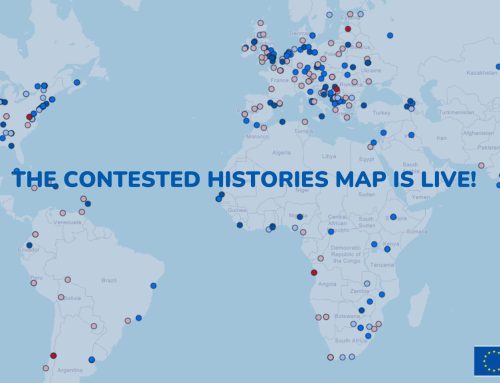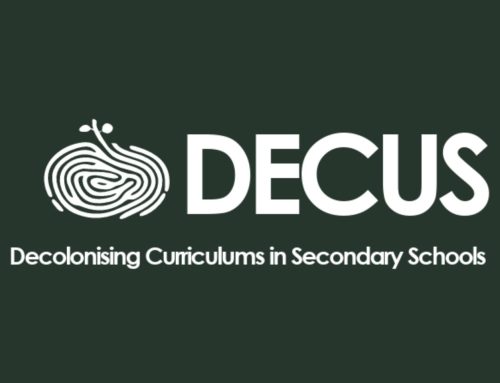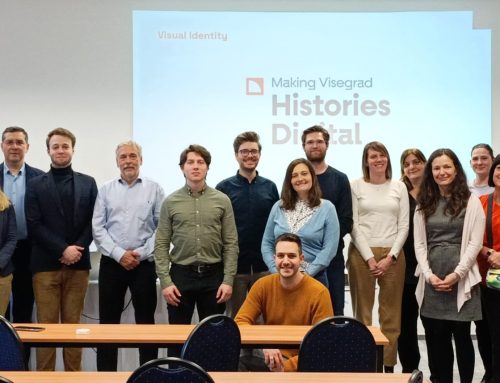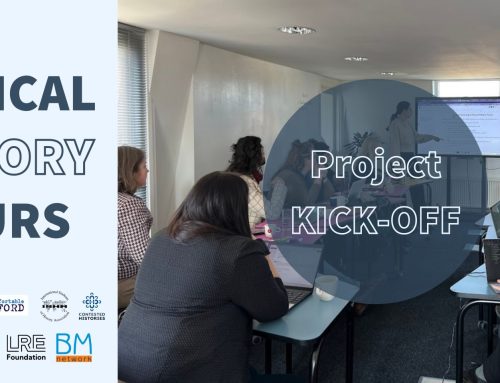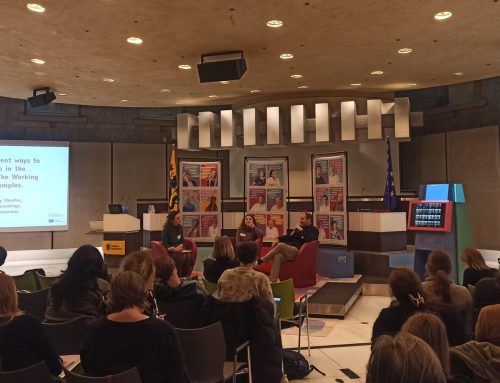On Wednesday, the 15th of May, members of EuroClio Secretariat and EUROPEANA staff met each other at the House of Europe, in The Hague to discuss future strategies and actions for the Europeana Creative project. Furthermore, the group participated in a workshop about the use of business models in the nonprofit sector, with a specific focus on EuroClio’s and EUROPEANA’s activities and products, i.e. The History Education Pilot.
The workshop, led by representatives of EUROPEANA and European Business Network (EBN), was split in two parts. First, the findings of a market activity analysis survey made by EUROPEANA were presented. The survey explored the dynamics of cooperation between cultural, nonprofit organizations and businesses in the private sector. Then David Tee, Senior Consultant at EBN, introduced the concept of business models and its implementation in the private sector. After that, he focused on the CANVAS Business Model and its features. In the final part of the workshop the participants practically applied the model to the three innovative history teaching tools ideated the day before. To get a better impression of the day, click also to see our photo album.
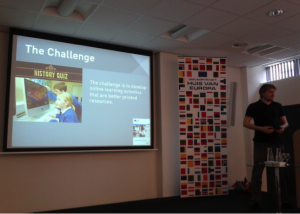
Market analysis results
EUROPEANA has recently promoted a survey within its vast network of cultural associations and private organizations, with the aim to gain a better insight into the way businesses and cul-tural organizations cooperate and how they experience this cooperation. The findings are im-portant to understand how nonprofit organizations could implement successful partnerships with for-profit counterparts. Unfortunately, due to a low respondent rate of 13% and the lack of na-tional diversity among the respondents the statistical value and validity are questionable.
Overall, the results of the survey showed that businesses and cultural institutions equally con-tribute to the success of cooperation, playing their respective strengths. While cultural institutions provide content and projects, businesses do marketing and sell this content. However, the authors of the survey testified that cultural institutions are looking for new business models and new models of cooperation. In particular the goal is to find long-term partners and donors ready to sustain the activities of the organization beyond a project-specific donation. Other findings clarify the need to understand from both sides the project and its scope.
Companies look for a cooperation characterized by clear and transparent decision-making since the early stages of the project. Furthermore, too often cultural organizations underestimate the role and importance of branding. Cultural organizations need to build awareness towards their cause, mission and activities. In order to be attractive for private donors, nonprofit organizations need to first explore and assess their own qualities and strengths. A crucial step towards approaching private, corporate partners is the definition of what could be offered and asked by both sides.
Companies are keen to contribute to the cause of cultural organizations if they are able to propose them cooperation that follows S.M.A.R.T. criteria, e.g. a project that is Specific in its goals and objectives, Measurable in its performance, Attainable in the its practical achievability, Relevant in its results-orientation, and Time-bound. The main recommendation is to not approach the business if the organization does not have a clear vision in mind about the aims, the output and type of coopera-tion for both the organization itself as for the business counterpart. Then, how to address these issues? A solution is provided by the business model concept, a powerful tool for shaping the actual stakeholders of the organization and the value of its activities and products.
The business model CANVAS
“Business model are more about creating value than money.”
The Business Model describes the rational of how an organization creates, delivers and captures value: its customers, offer, infrastructure and financial viability. Every type of business model follows a specific logic towards the definition and implementation of the organizational structure that suits the most the needs and desires or partners and customers. A good business model al-lows the creation of value for the organization and its stakeholders.
The focus of the workshop has been on the business model CANVAS. This model is especially suitable for single products and is developed around nine blocks, here listed. It offers a tool to invent, describe, design and also challenge the activity/product/project you want to implement.
The 9 building blocks of Business Model CANVAS
1) Customer Segments: Which customers and users are we serving? Which jobs do they really want to get done?
2) Value Proposition: What are we offering to our customers? What is that getting done for them? Do they care?
3) Channels: Through which channels are our customer segments reached?
4) Customer Relationship: Which type of relationship does each of our customer segments expect us to establish and maintain with them?
5) Revenue Streams: What are you customers willing to pay for? How?
6) Key Resources: Which resources underpin our business model?
7) Key Activities: What key activities do our value propositions, customer relationship and revenue streams require?
8) Key Partners: Who are our key partners? Which partners and suppliers rely on our business model?
9) Cost Structure: What is the resulting cost structure? Which key elements drive your costs?
The key to the successful implementation of this model is how accurately these nine blocks are answered. A careful assessment of each block will clearly show how well the objectives have been defined, what are the strengths of the organization and what sections needs further assessment. The more people get involved into this process, the more chances the organization will have to understand what its customers and partners need and the more reliable the answers to the nine blocks will be.
How does the EUROPEANA Creative Project benefit from the implementation of the Business Model CANVAS?
The Business Model CANVAS concept allows a clear definition of factors that play a crucial role towards the success project. We can now define clearly who we want to achieve and keep in relationship with the project, through which channels, key resources, activities and partners. Moreover, specifying what are revenues and costs streams expected from the project we can bet-ter assess its sustainability.
We have the tool, we now need all the people involved in the project to share their ideas and views because everyone can offer the perspective we are missing to make EUROPEANA Crea-tive Project a success.

